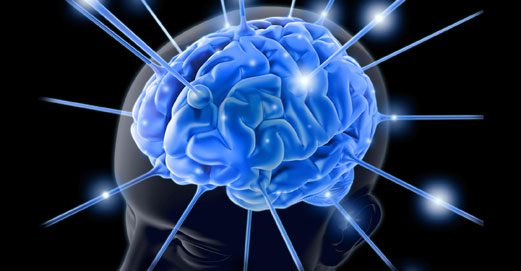


Stem Cell Treatment for Neurodegenerative Conditions
Stem Cell Therapy Institute offers innovative Stem Cell Therapy for various neurodegenerative conditions including Parkinson's disease, multiple sclerosis, Alzheimer's disease, and traumatic brain injury. Treatment is executed using adipose-derived stem cells that are harvested from the patient's own body. Stem Cell Therapy Institute prides itself on maintaining the highest standards in investigative research and treatment.
Undifferentiated adult stem cells are changeable and can transform into the cells of countless organs and structures within the human body. Used in many different therapies, they heal damaged fibers and rejuvenate failing cells through cell division, a process in which they multiply indefinitely. Stem cell science has seen vast improvements in recent times with many new developments and discoveries being made.
Stem Cell Treatments include:
Stroke Treatment with Stem Cell Therapy
Stroke patients are treated using autologous adult stem cells, which are harvested from the patient. There is therefore very little possibility of a patient's body rejecting the cells.
Stem Cell Therapy Institute utilizes stem cells that come from the patient's bone marrow and adipose tissue, or fat. As adipose tissue extraction is more effective than bone marrow extraction, the tissue yields up to ten times more stem cells, it is much more commonly used in stem cell therapy. Bone marrow extraction is also a more difficult procedure to carry out generally.
Organs and tissues can be targeted directly with the specialized catheterization procedure. It is also non-invasive and thus easy on the patient. Stem cells can be delivered around the body, there is no need for anesthesia and it all takes less than an hour.
Stem Cell Therapy Institute offers stroke patients the most innovative and high quality therapies. Collaborative medical practitioners work to encourage and define best practice. They learn together, measure their results and establish treatment protocols. The Center of Excellence operates with groups of licensed medical experts who adhere to formally appointed bodies of expertise. The highest standards of treatment and investigative research are thus maintained.
Parkinson's Disease Treatment with Stem Cell Therapy
Parkinson's disease affects the brain and leads to shaking and problematic walking, movement, and coordination.
Parkinson's disease usually develops after the age of 50. It is one of the most widely seen nervous system disorders in the elderly. The condition can occur in younger adults and it affects both women and men.
Parkinson's disease sometimes occurs in families. Young people tend to be affected when a form of the disease runs in their family.
The brain chemical dopamine helps nerve cells to control muscle movement. Parkinson's disease appears when the dopamine producing nerve cells in the brain are slowly destroyed. With no dopamine, the nerve cells in that section of the brain cannot properly communicate. This causes the loss of muscle function. Damage increases with time. Why these brain cells degenerate is not known.
Parkinson's in children can occur when the nerves are less sensitive to dopamine, but it is rare.
Parkinson's disease symptoms include shaking and tremors, automatic movements slowing or stopping, such as blinking, drooling, trouble swallowing, trouble walking, an unexpressive face, muscle pain, stiff muscles, movement problems, quiet, slow and monotone speech, stress, confusion, dementia, fainting, hallucinations, memory loss and depression.
Treatment for Alzheimer's Disease with Stem Cell Therapy
Dementia is the loss of brain function that occurs alongside certain diseases. Alzheimer's disease (AD) is a form of dementia. It affects thinking, memory and behavior and gradually gets worse over time. For a diagnosis to be made areas such as personality, memory impairment, decision-making ability and language are investigated.
The main Alzheimer's risks are age and a family history of the disease. Long-term high blood pressure, being female and having a history of head trauma are also thought to contribute, although these risk factors are not as well proven.
Alzheimer's disease can be early onset, where symptoms appear before the age of 60, or late onset, where symptoms appear after the age of 60. The former is much less common but has more of a genetic link.
It is thought that both genetic and environmental factors contribute to Alzheimer's disease. The exact cause is not known and it is only by examining brain tissues after death that a 100% diagnosis can be made.
The neurons in the brain of someone with Alzheimer's disease become destroyed and the presence of chemicals that aid neurotransmitters reduces. Usually cooperative parts of the brain become disconnected.
Stem Cell Therapy for Traumatic Brain Injury
Millions of people in the US suffer brain and head injuries every year. Over 50% are so bad that people need to visit a hospital. Severe injuries can cause permanent brain damage or even death.
50% of traumatic brain injuries (TBIs) happen because of motor vehicle accidents. Military personnel are also at an increased risk of sustaining such injuries.
Traumatic brain injury symptoms can take days or even weeks to present themselves. Emergency treatment is necessary for serious traumatic brain injuries.
The outcome and treatment of traumatic brain injury depends on the specific damage incurred.
Traumatic brain injury symptoms include changes to thinking, language, sensation and emotions. The condition is sometimes associated with post-traumatic stress disorder.
Those who have suffered severe injuries usually require rehabilitation.
Multiple Sclerosis treatment with Stem Cell Therapy
Multiple sclerosis, or MS, is an inflammatory disease with a broad spectrum of symptoms. Myelin sheaths on the axons of the spinal cord and brain develop lesions due to this disease. This hinders communication between the nerve cells in the spinal cord and the brain. Symptoms can progress to varying degrees of physical and cognitive disability.
MS is more common in women and most people are see the first signs of the illness as young adults. Multiple sclerosis prevalence ranges from 2 to 150 per 100,000 people. Its symptoms were first described by Jean-Martin Charcot in 1868.
